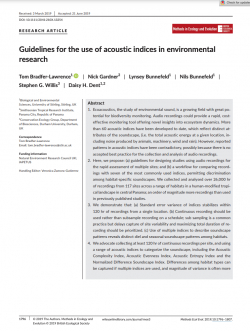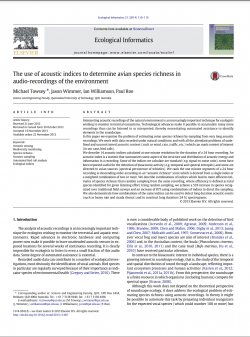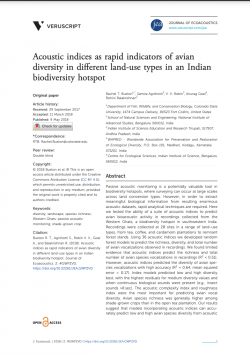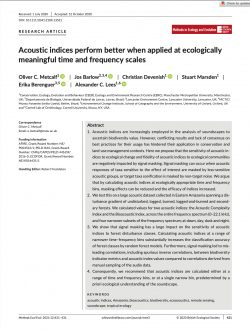Assessing the effect of zoo closure on the soundscape using multiple acoustic indicators

Type
Journal
Category
Article
[ Browse Items ]
Publication Year
2024
Publisher
Ecological Indicators, United States
URL
[ private ]
Volume
158
Pages
111476
Tags
Abstract
The zoo soundscape has important implications for animal welfare, management, and conservation. However, despite its importance, the zoo soundscape is yet to be examined in depth. Consistent human presence can influence the zoo soundscape. However, it is difficult to determine the specific impact of human presence, as visitors are usually present during the day when animals are active. The COVID-19 lockdown in 2020 provided a unique opportunity to study zoo soundscapes in the absence of visitors. The main aim of this study was to compare the sound environment across three zoo aviaries during the 2020 closure period to a comparable period in 2019 in which the zoo was open. We examined broad band frequency measures of sound pressure levels, sound pressure levels in defined frequency bands, and ecoacoustic indices (the Acoustic Complexity Index and Normalized Difference Soundscape Index) to describe the zoo soundscape. Ecoacoustic indices have not, to our knowledge, previously been used in the zoo setting, although they may provide a useful metric to assess zoo soundscapes. Therefore, we used this natural experiment to explore how successful these measures may be in assessing sound in zoo environments. We found that, during the zoo closure period, the overall sound pressure levels were lower (by 4.4 – 6.4 dB(Z) depending on aviary), and this effect was particularly pronounced in the lower frequency bands. The proportion of sound energy at low frequencies was also lower during the zoo closure period in two of the three aviaries. We argue that NDSI could be a useful index for determining the impact of human presence in zoos, although further information on how it is influenced by additional factors, such as human speech, would be beneficial. The use of multiple indices to assess the sound environment can provide additional information beyond traditional measures of sound levels in zoos, such as frequencies where sound energy is concentrated and characteristics of the soundscape, which could be used to better target management and mitigation.
Description
https://www.sciencedirect.com/science/article/pii/S1470160X23016187
Number of Copies
1
| Library | Accession No | Call No | Copy No | Edition | Location | Availability |
|---|---|---|---|---|---|---|
| Main | 758 | 1 | Yes |



